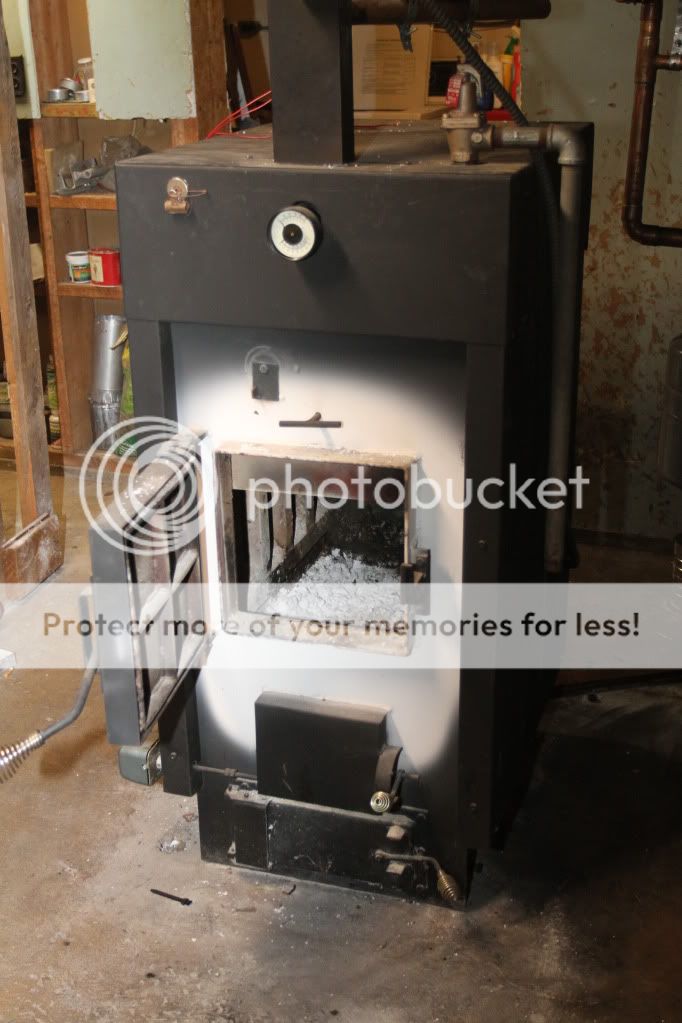I am going to try and heat water on my wood stove via a copper coil under the side/rear heat shield, or a heat exchanger similar to this under the heat shield ( http://www.americanroyal.net/page/page/4344281.htm ), and/or a box on top of the stove with water running thru it.
I don't have any concept of how much convection it takes to get enough heat to warm the water----it is conceivable that I could run the water thru the box on top---and around three sides before it exits the stove----but I have no idea if the water will be as hot as it can get by just mounting one "radiator" on the side of the stove and all the rest would be over kill as the water would have picked up as much heat as it can carry thru just on coil vs. three coils and a box. (Hopefully the way I explained that makes sense).
All the water at/on/near the wood stove will be unpressurized---open to atmosphere in case of boiling/power loss for circ pump. I plan on using this hot water thru either a side arm or plate type heat exchanger to supplement fin tube radiant heat.
I don't have any concept of how much convection it takes to get enough heat to warm the water----it is conceivable that I could run the water thru the box on top---and around three sides before it exits the stove----but I have no idea if the water will be as hot as it can get by just mounting one "radiator" on the side of the stove and all the rest would be over kill as the water would have picked up as much heat as it can carry thru just on coil vs. three coils and a box. (Hopefully the way I explained that makes sense).
All the water at/on/near the wood stove will be unpressurized---open to atmosphere in case of boiling/power loss for circ pump. I plan on using this hot water thru either a side arm or plate type heat exchanger to supplement fin tube radiant heat.


